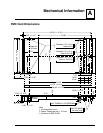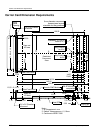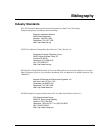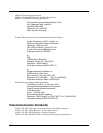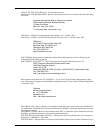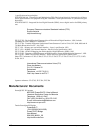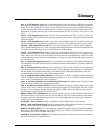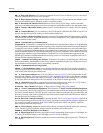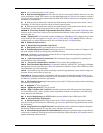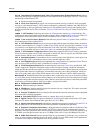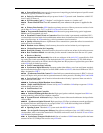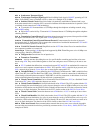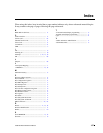
Glossary
4538 Hardware Reference Manual 125
PDU Protocol Data Unit A message of a given protocol comprising payload and protocol-specific control
information, typically contained in a header.
PLP Packet Level Protocol Network layer protocol in the X.25 protocol stack. Sometimes called X.25
Level 3 and X.25 Protocol.
PMC PCI Mezzanine Card PCI “daughter” card designed to mount on a “mother card”.
POST Power-On-Self-Test Test that automatically runs whenever the power is applied to the
card.
PRI Primary Rate Interface ISDN interface to primary rate access. Primary rate access consists of a sin-
gle 64-Kbps D Channel plus 23 (T1) or 30 (E1) B Channels for voice or data.
PROM Programmable Read-Only Memory ROM that can be programmed using special equipment.
PROMs can be programmed only once.
PVC Permanent Virtual Circuit or Connection Virtual circuit that is permanently established. PVCs
save bandwidth associated with circuit establishment and tear down in situations where certain virtual circuits
must exist all the time. In ATM terminology, called a permanent virtual connection.
QoS Quality of Service Measure of performance for a transmission system that reflects its transmission
quality and service availability.
RAM Random-Access Memory Volatile memory that can be read and written by a microprocessor.
RISC Reduced Instruction Set Computing
ROM Read-Only Memory Nonvolatile memory that can be read, but not written, by the microprocessor.
RTM Rear Transition Module A module that provides network connections from the rear of a system.
Rx Receive or Receiver
SAR Segmentation And Reassembly One of the two sublayers of the AAL CPCS, responsible for divid-
ing (at the source) and reassembling (at the destination) the PDUs passed from the CS. The SAR sublayer
takes the PDUs processed by the CS and, after dividing them into 48-byte pieces of payload data, passes them
to the ATM layer for further processing.
SCC Serial Communication Controller
SDH Synchronous Digital Hierarchy European standard that defines a set of rate and format standards
that are transmitted using optical signals over fiber. SDH is similar to SONET, with a basic SDH rate of 155.52
Mbps, designated at STM-1.
SDLC Synchronous Data Link Control SNA data link layer communications protocol. SDLC is a bit-ori-
ented, full-duplex serial protocol that has spawned numerous similar protocols, including HDLC and LAPB.
SDU Service Data Unit A unit of interface information whose identity is preserved from one end of a
layer connection to the other.
SDRAM Synchronous Digital Random Access Memory
SEAL Simple And Efficient AAL Scheme used by AAL5 in which the SAR sublayer segments CS PDUs
without adding additional fields.
SIU Serial Interface Unit
SMC Serial Management Controller
SMDS Switched Multimegabit Data Service High-speed, packet-switched, datagram-based WAN net-
working technology offered by the telephone companies.
SNA Systems Network Architecture Large, complex, feature-rich network architecture developed in the
1970s by IBM.
SONET Synchronous Optical Network High-speed (up to 2.5 Gbps) synchronous network specification
developed by Bellcore and designed to run on optical fiber. STS1 is the basic building block of SONET.
Approved as an international standard in 1988.
SS7 Signaling System 7 Standard CCS system used with BISDN and ISDN.
SSCS Service Specific Convergence Sublayer One of the two sublayers of any AAL. SSCS, which is ser-
vice dependent, offers assured data transmission. The SSCS can be null as well, in classical IP over ATM or
LAN emulation implementations.
STM-1 Synchronous Transport Module level 1 One of a number of SDH formats that specifies the frame
structure for the 155.52-Mbps lines used to carry ATM cells.




